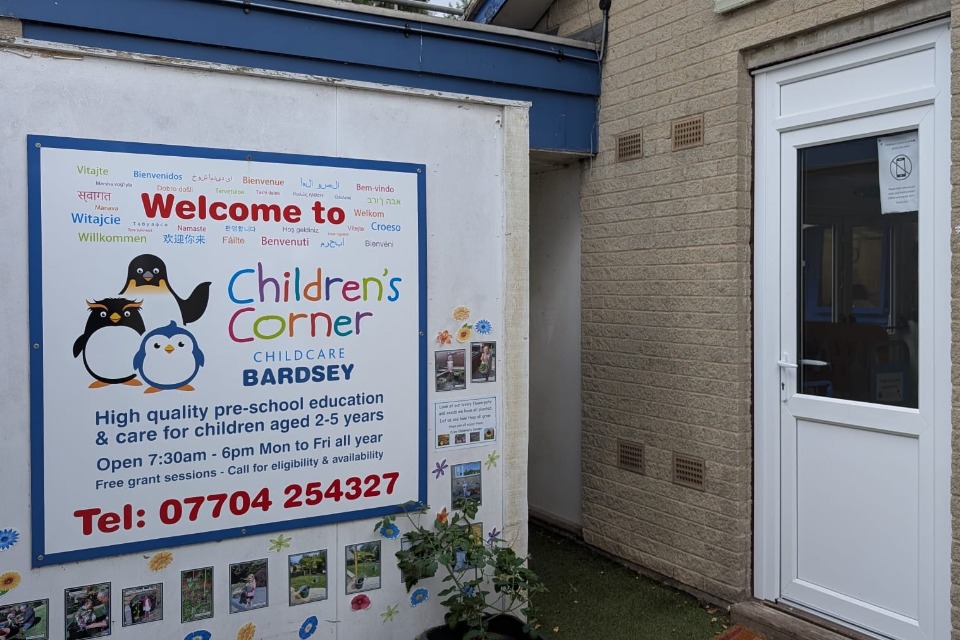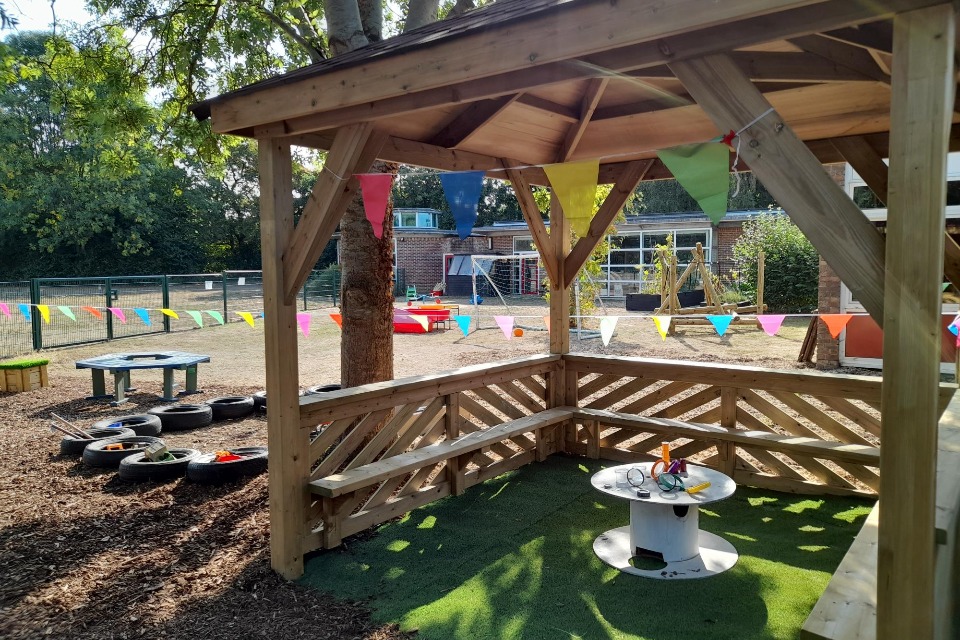How a primary academy and an infant school each worked with a private, voluntary and independent (PVI) provider to reap the benefits of their mutual expertise.
Bardsey Primary Academy, West Yorkshire
As part of a trust with 15 academies, we've always believed in the power of early education to shape futures. Our nursery, which has been operating for over a decade, is a small but vibrant setting offering 20 places for 3- and 4-year-olds.
It's run in partnership with a trusted PVI provider that manages day-to-day operations while we act as the landlord under a formal agreement. The nursery currently occupies part of the main building and a small section of the playground, and we're now expanding into the former caretaker's bungalow.
Working with our PVI partner
Our relationship with our PVI partner has been longstanding and positive. Given its reputation and its alignment with our values, we felt there was no need to consider other providers. That said, we still carried out due diligence to ensure continued high standards.
For schools working with new providers, we'd strongly recommend engaging the local authority early and ensuring clear governance structures are in place. Our landlord agreement has worked well, providing clarity while allowing the PVI to focus on delivering excellent care and education.
Why we chose to expand
The motivation to expand was clear. We had a long waiting list, strong local demand and a shared desire to support early learning from an even younger age.
We engaged early with our community - parents, carers, the local authority and our multi-academy trust (MAT) board. Their feedback was overwhelmingly positive, especially about the introduction of places for 2-year-olds. We knew this expansion would not only meet a need but also strengthen the pipeline into our school, where we already see around 95% retention from nursery to reception.
Planning and set-up
We consulted with parents and carers early on through surveys and a dedicated consultation evening. This helped us shape the offer and build trust.
Internally, we reviewed our gross floor area and staffing to determine capacity, and decided to add 9 places for 2-year-olds and 11 for 3-year-olds, bringing our total to 40.
Marketing and enrolment
We promoted the expansion through a mix of newsletters, social media, banners around the school and local leaflet drops. The response was immediate and enthusiastic - some families contacted us after spotting the banners on our perimeter fence. It's been wonderful to see such strong community interest.
Challenges and lessons learnt
The planning process was fast-paced and, at times, challenging. We had to wait for funding confirmation before submitting our planning application, which introduced some risk and delays. Planning permission costs were also a concern. However, we were fortunate to have strong support from both our MAT's central team and external advisers, who helped with building control, costings, and compliance with Department for Education space guidelines.
Taking part in the programme has been a really positive experience. It's provided a valuable opportunity to reflect on how collaboration between schools and PVIs can support high-quality early years provision and meaningful partnerships.

The nursery at Bardsey Primary Academy
Fordingbridge Infant School, Hampshire
We've long recognised the value of having nursery provision on-site, not only for the continuity it can offer children from birth to age 11, but also for the vital support it provides to families in our community. While we had neither the capacity nor the funding to deliver this ourselves, we were already working closely with Hampshire local authority's early years team to identify a private provider that shared our vision.
Working with our PVI partner
We were delighted to partner with Stepping Stones pre-school playgroup (now called Muddy Boots Fordingbridge Limited), an experienced early years provider already operating locally. Its vision - to create a nurturing environment where children thrive emotionally, socially and academically - aligned perfectly with ours. And its commitment to outdoor learning, including daily use of the adjacent woodland area, brings a rich, nature-based dimension to early education that we fully support.
Why we chose to expand
Muddy Boots can now expand its provision to offer places for children from 9 months old. This is meeting a real need in our community - particularly the places for babies. It is also hoping to extend its hours to 8am to 6pm to support working families.
Parents and carers have been supportive of the move, appreciating the consistency and convenience of having early years provision integrated with the school.
Planning and set-up
Muddy Boots secured and began repurposing a former Sure Start centre on our grounds, undertaking modest but essential works, including internal refurbishments such as new toilets, electrical upgrades and redecorating.
Staffing and recruitment
Staffing has been a key focus throughout. Muddy Boots recruited early, hiring 3 new team members, appointing 2 co-deputies, and ensuring a strong mix of experienced national vocational qualification (NVQ) level 3 practitioners, apprentices and agency workers. Its proactive approach, supported by internal MAT expertise and external advisers, means it's fully staffed and ready to scale if needed.
Challenges and lessons learnt
We had to carefully navigate the complexities of contracts, health and safety, and safeguarding, while recognising that the requirements of early years provision differ from those in a school setting. However, this partnership has been a true collaboration, built on shared values, mutual trust and a joint commitment to serving our community.
We're very pleased to be working together to provide a service to local families. The strong relationship between the school and the early years setting has created a nurturing, high-quality setting, right here on the school grounds, that will meet the needs of children from 9 months to 11 years old.
It not only ensures a smooth and supportive transition into primary education, but also provides families with accessible, consistent care and learning in a familiar environment, laying strong foundations for every child's future.

Muddy Boots nursery at Fordingbridge Infant School
Our advice for schools and PVI providers wishing to collaborate effectively
Align your vision
The headteacher and nursery manager should agree on a clear, shared purpose, such as meeting the needs of local families and creating a nurturing environment. This sets the tone for a strong partnership.
Define your core values
Agree on the values you'll promoted and emphasise within the setting to support children's development. A unified approach helps create consistency.
Build a trusting relationship
Trust is the foundation of successful collaboration. Respect each other's roles and expertise, and be open to learning from one another.
Communicate constantly
Maintain regular, open communication. Frequent check-ins help address issues early, align priorities, and keep everyone informed and engaged.
Value mutual strengths
Recognise and trust each other's skillsets, whether it's early years pedagogy, operational leadership, business acumen or community engagement. This improves decision-making and delivery.
Consider the bigger picture
For all-through schools, having a nursery on site with a lower age range can be of huge benefit to families. It supports the continuity of care and education, and strengthens the school's role in the community.






